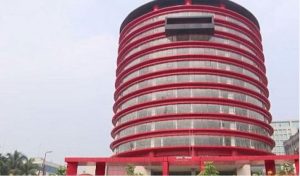The world is afflicted by problems that people experience in their daily lives: clean air in congested cities, a healthy and independent life in old age, access to digital technologies that improve public services, and treatment of diseases like cancer or obesity that continue to afflict millions of people across the globe.
What is the relationship between these problems and the dynamics of science, research and innovation? Of course we all recognise that science is needed to produce medicines, but what is the role of research and innovation in producing a more ‘caring’ society and solutions to health care systems? Equally, while we know that science is needed for the emergence of renewable energy, what is the role of research and innovation in producing economies that are more sustainable across areas of production, distribution and even consumption patterns? And how can we use innovation to build cities that are more enjoyable to live in?
The good news is that we don’t have to look very far for lessons to learn from. Most of the ‘smart’ products we have in our bags and pockets came from investments that were more far reaching than a simple ‘science push’ explanation provides. They came from the ability to connect science to solving concrete problems — missions!
The internet was not discovered as an ex-ante objective, but to solve the problem that scientists had in the late 1960s to allow multiple computers to communicate on a single network. This led to the creation of ARPANET (Advanced Research Projects Agency Network) funded by the U.S. Department of Defence, and later the Internet in all of our smart products today.
Similarly, the Global Positioning System (GPS) was not discovered so that we can use Google maps on our iPhones, but rather for military and intelligence uses to solve specific problems when the US was at the height of the Cold War competing with the Soviet spacecraft Sputnik in 1957. In other words, both the internet and GPS were spillovers from missions.
Today we have the opportunity to direct innovation in similar problem-solving ways, as bold as the moon shot programme was but instead aimed at the multiple social and technological challenges we have. These will be inspired not by Cold War challenges, but around what one could call the war on poverty and the war on climate change, and thus the urgent need to create societies that are more just and sustainable.
Last year, the European Commissioner for Research, Science and Innovation, Carlos Moedas, invited me to draft strategic recommendations on mission-oriented research and innovation in the EU to guide the future European Union Framework Programme for Research and Innovation. Europe has been ahead of the game by thinking hard over the last decade about how to direct innovation around grand challenges as part of the EU’s Horizon 2020 ambition to create growth that is smarter, more inclusive and more sustainable. For the next framework programme (Framework 9), a mission approach will help steer investments towards tackling challenges using a more focussed problem-solving lens.
Problems are more specific than challenges, but much broader than a specific technology or a sector. Indeed, the moon mission required many different sectors to be involved — from aerospace to textiles, and many different actors to work together on multiple solutions.
Today’s missions are more complex and ‘wicked’ than going to the moon. This is at the heart of what Dick Nelson meant in his excellent work on ‘The Moon and the Ghetto’, where he asked how it could be that we got a man to the moon and back, and have not been able to solve key issues around inequality, such as the emergence of ghettos. Wicked problems require more attention to ways in which social issues interact with political and technological issues, the need for smart regulation, and the critical feedback processes across the entire innovation chain. They also require more civic engagement, as it has become increasingly clear that European tax must be used to work on problems that matter to European society.
This is not about a box ticking exercise to solve one problem after another. Rather this is a way to steer economic growth in more meaningful ways. Indeed, in a historical period in which business investment is lagging, missions also provide more excitement about where economic growth opportunities might lie. By setting missions that require different sectors to work together — it is possible to create instruments that reward those businesses willing and able to co-invest alongside investments by the European Commission and member states. It is not about subsidies, but about co-investments along the entire innovation chain. And while tax incentives (and cuts) might increase profits, they often don’t increase investment. Mission oriented policies can, if designed appropriately, catalyse expectations about new opportunities and in so doing catalyse cross sectoral investments which can also better balance economies that are often too skewed in particular areas. They can create more ‘additionality’ — making investments happen that would not have otherwise.
It can also become an opportunity to better link industrial strategy to innovation policy. Rather than a ‘pick the winners’ strategy to industrial policy, mission setting can foster a ‘pick the willing’ strategy: whoever is willing to engage in the risk taking and long-term investments required to solve ambitious societal problems is welcome to bid for funding! Such ambitions and focus on problem solving also make industrial policy less susceptible to ‘capture’ by the interests of particular sectors.
In other words, mission setting can catalyse a wave of public and private investments that tackle key societal and technological challenges and redirect the process of economic growth, so that we solve concrete problems while also better aligning the economic agenda with the innovation agenda.
On February 22nd 2018, I published my recommendations to the European Commission in a new report launched in Brussels: ‘Mission Oriented Research and Innovation in the European Union: a problem solving approach to fuel innovation-led growth’. In the report I set out five key criteria for selecting missions:
1. They should be bold and address societal value
2. They should have concrete targets — so you know when you get there
3. They should involving research and innovation with technological readiness over limited time frame
4. They should foster cross-sectoral, cross-actor, and cross disciplinary collaborations
5. They should allow multiple competing and bottom up solutions
I also provide examples of what possible future missions at EU level could look like, which include a plastic-free ocean, 100 carbon neutral cities by 2030, and cutting dementia by 50%.
Our work on mission-oriented policy is also helping to shape domestic policy here in the UK. Last week, the Institute for Innovation and Public Purpose (IIPP) launched a new Commission on Mission Oriented Innovation and Industrial Strategy (MOISS). The idea is to use the UK government’s Industrial Strategy to support not sectors, but problems facing UK society. Those problems are abundant, but have been framed in terms of three key challenges. The aim of the Commission is to transform those challenges into missions. We will harness the lesson from the five criteria above, and also question key issues regarding ‘who’ sets missions, and how to most involve the wider public and different actors across the economy.
Missions require organisational capacity and leadership. With this in mind, IIPP has also formed a new network dedicated to the study of how mission oriented organisations work called the Mission Oriented Innovation Network(MOIN). The MOIN Founding Partners are a select group of leaders and key members of teams from a diverse set of public organisations — from public banks, to innovation agencies, to strategic design units. The emphasis of the network is on developing new organisational capacities and capabilities needed within public organisations in order to enable them to set missions collaboratively, and to foster the experimentation process necessary for welcoming multiple bottom up solutions. Key to this process is the creation of new ways to both create and evaluate public value, which can, amongst other things, aid ministries of finance to evaluate the dynamic spillovers created by mission oriented innovation outside the static cost-benefit framework.
Our work has also been instrumental in shaping the design of a new mission-oriented state investment bank in Scotland. For the past six months I have been part of a small advisory group developing an evidence-based implementation plan for the new Scottish National Investment Bank. On February 28th, this plan was launched and endorsed by First Minister Nicola Sturgeon at a launch event in Edinburgh. The bank will be tasked with advancing policy driven missions such as transitioning to a low carbon economy and responding to emerging demographic pressures.
Mission-oriented policy is far from being a step into the unknown. There is substantial experience accumulated over many decades of successful practice which we can learn from to foster a more coherent and cohesive framework across sectors, institutions and nations. By harnessing and directing the power of research and innovation, missions not only stimulate economic activity and growth — they can also help address the wicked problems of our time.
About Mariana Mazzucato
Mariana Mazzucato is Professor of the Economics of Innovation at the Science Policy Research Unit of the University of Sussex. She is the author of The Entrepreneurial State: Debunking Public vs. Private Sector Myths.




